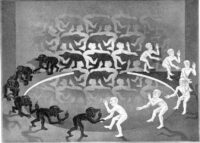When the economy collapsed in 2008 it was widely blamed on poor home loan lending practices. People who should have never received loans to purchase a house due to their inability to repay those loans once the introductory low-interest rate period ended were granted loans anyway. It is true that in the run up to that crisis, companies like Countrywide Bank were making loans without even reviewing borrower paperwork, or even requiring any. Satisfactory credit rating scores seemed to be evidence enough, and “bait and switch” adjustable interest rate loans undoubtedly snared many who found themselves with payments suddenly too high to afford. But the deeper cause of the crisis was not that borrowers could not repay their loans; the real culprit was the way in which Wall Street bundled, packaged and sold billions in mortgage-based securities without any awareness or understanding of their underlying lack of value. No paperwork, no appraisals, no means-testing; in short, mortgage-based securities of that period were pure junk — a tangle of untestable assumptions tied to market momentum and seller-investor greed. The people who bought and sold had absolutely no idea about what they were buying and selling; it all existed on paper but otherwise signified nothing. And like failed Lehman Brothers, nothing is what they all got.We tend to think of a dollar as something, but what is it really? In some sense, a dollar is the relic of an ancient method of trade but now signifying nothing. Signifying nothing is both its strength and weakness; by signifying nothing, a dollar can represent anything. There was a time when a dollar bill signified silver or gold, its basis rooted in the ancient linkage to precious metal. That ended with President Nixon. The dollar became a “floating” currency, and as the currency of the dominant financial power on the planet, it simply signified itself via the value of America, and ll other currencies measured themselves against it. Thus it assumed a dual role: a concrete unit of measure used in transactions, and a floating self-signifier of no actual fixed value.When the Euro was created, a joint currency of multiple independent countries, the signification of nothing took a quantum leap. Unlike the dollar, which represents the economic potential of the United States, the Euro represents a region. Thus the economic weakness of Spain or Portugal impacts the Euro despite the economic strength of Germany. This makes the Euro highly unstable, but it is finding a place in global commerce nonetheless. Middle Eastern and African countries now trade and hold Euros as well as dollars, though like the mortgage securities that led to disaster in 2008, holders of Euros have no understanding of its underlying value or how its perceived value is imputed. Though the dollar signifies nothing, the Euro abstracts money to another level and actually signifies the nothing of nothing: a currency issued by a regional non-nation. If you want to know how this would work with the dollar, just imagine its value being directly impacted by the economy of Detroit. Investing money in the value of money, what’s called financial “instruments,” is what got us into trouble in 2008. The ultimate in financial abstraction, it’s a great way to create temporary wealth, but also a great way to discover, in Shakespeare’s words, “sound and fury signifying nothing.”
Signifying nothing
More from Public CitizenMore posts in Public Citizen »




